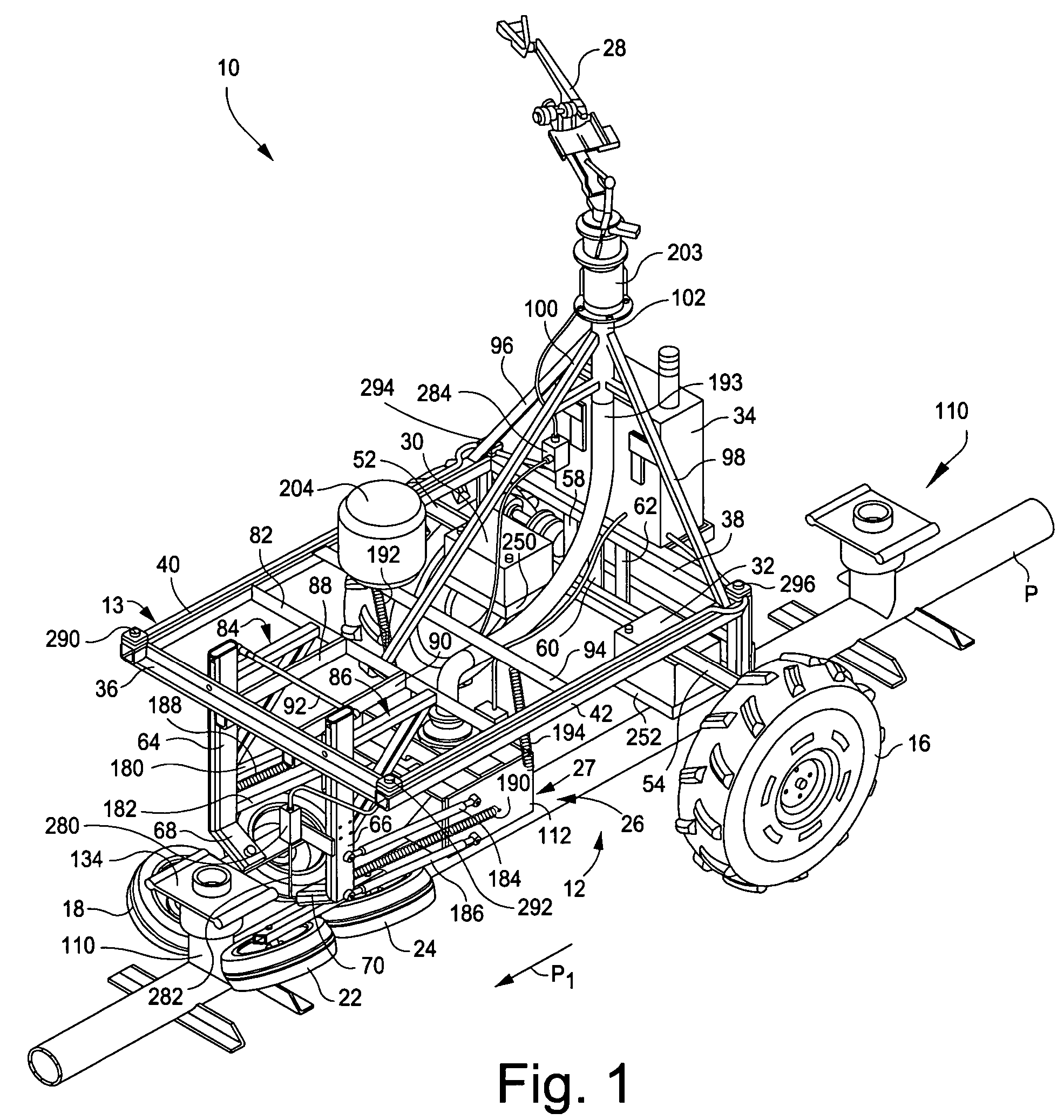Traveling sprinkler incorporating automatic water supply valve docking station
a technology of automatic water supply valve and travel irrigation, which is applied in watering devices, horticulture, agriculture, etc., can solve the problems of canal water being often dirty, few if any successful machines, and the latter machines, however, have drawbacks
- Summary
- Abstract
- Description
- Claims
- Application Information
AI Technical Summary
Benefits of technology
Problems solved by technology
Method used
Image
Examples
Embodiment Construction
[0063]With reference initially to FIGS. 1-5, the traveling sprinkler 10 generally includes a cart 12; a pair of rear drive wheels 14, 16; two pairs of forward guide wheels 18, 20 and 22, 24; a docking station 26 communicating with a single large-volume sprinkler 28; a pair of 12-volt batteries 30 and 32; and a programmable logic controller (PLC) 34.
[0064]More specifically, the cart 12 is formed by a rectangular steel or other suitable metal (e.g., aluminum) frame 13 that includes parallel front and rear rails 36, 38 connected by parallel side rails 40, 42 welded together to form a rigid main frame subassembly (or simply, main frame). Vertical frame members 44, 46 extending downwardly at the rear of the main frame support the drive wheels 14, 16 via conventional stub axles 48, 50. The main frame is reinforced at the rear by angled rails 52, 54 extending between the vertical frame members 44, 46 and the side rails 40, 42. A crossbeam 56 extends between the vertical frame members 44, 4...
PUM
 Login to View More
Login to View More Abstract
Description
Claims
Application Information
 Login to View More
Login to View More - R&D
- Intellectual Property
- Life Sciences
- Materials
- Tech Scout
- Unparalleled Data Quality
- Higher Quality Content
- 60% Fewer Hallucinations
Browse by: Latest US Patents, China's latest patents, Technical Efficacy Thesaurus, Application Domain, Technology Topic, Popular Technical Reports.
© 2025 PatSnap. All rights reserved.Legal|Privacy policy|Modern Slavery Act Transparency Statement|Sitemap|About US| Contact US: help@patsnap.com



